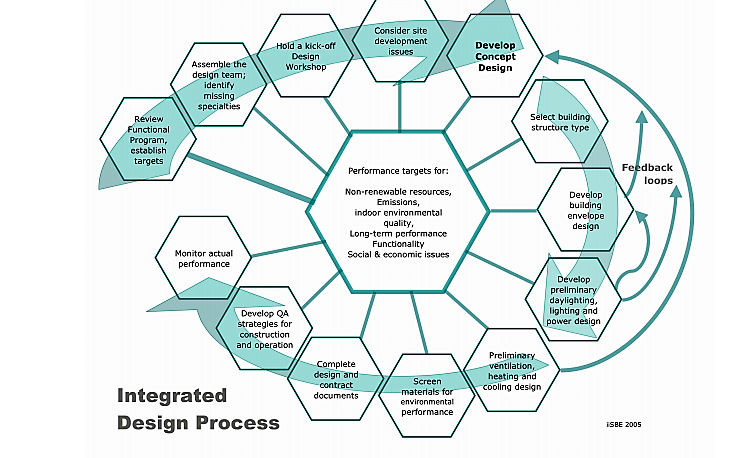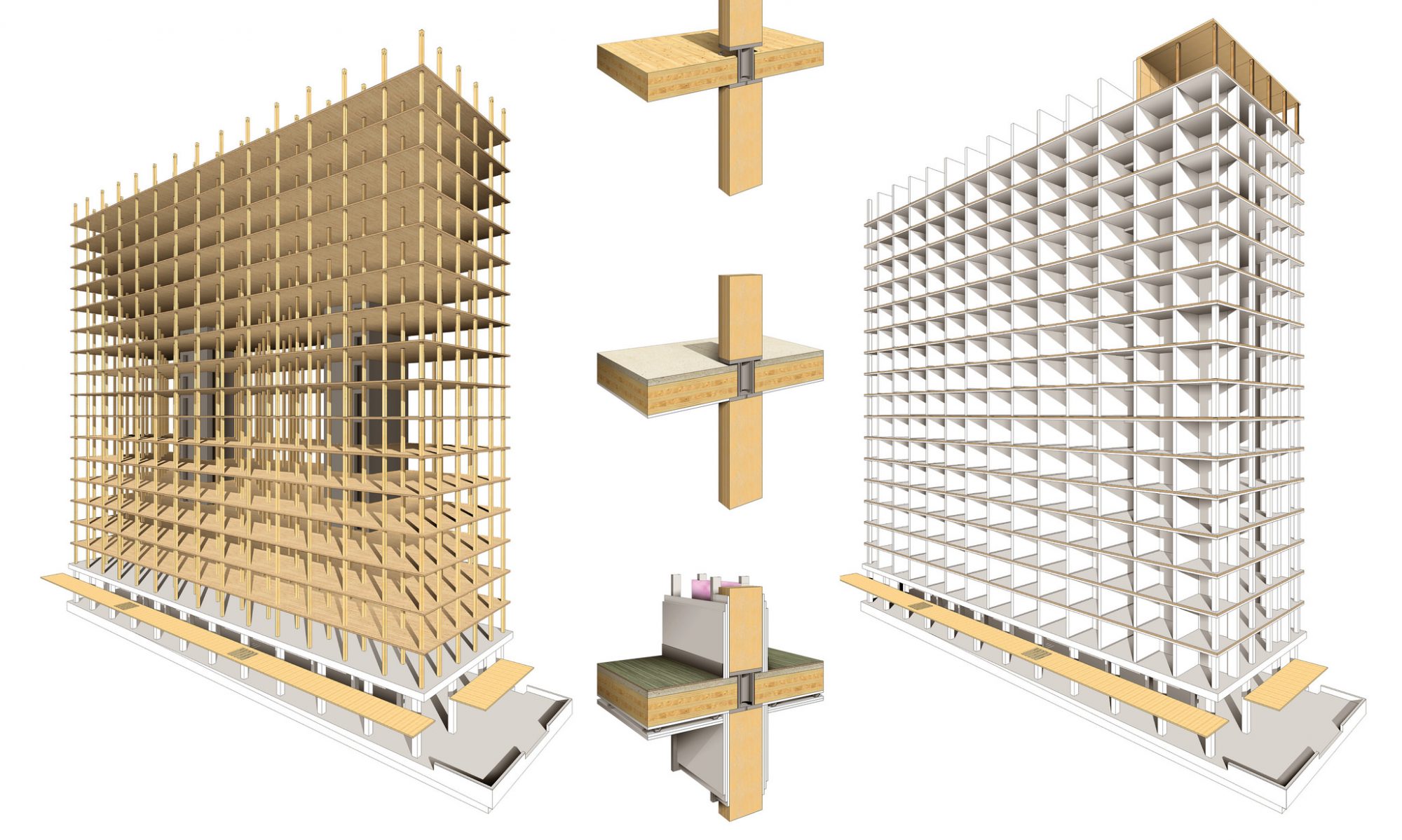The IDP was first used in the early 1990s, by Canada’s C-2000 program (program supporting advanced, energy-efficient commercial building design) and IDEAS Challenge competition (multi-unit residential buildings challenge) to describe a more holistic approach to building design. In profesional practice, IDP has a significant impact on the makeup and role-playing of the initial design team. The client takes a more active role than usual, the architect becomes a team leader rather than the sole form-giver, and the structural, mechanical and electrical engineers take on active roles at early design stages. The team includes an energy specialist (simulator) and possibly a bio-climatic engineer. Depending on the nature of the project, a series of additional consultants may also join the project team from the outset.
Some of the key advantages of the IDP are cited below:
- Goal-driven with the primary goal being sustainability, but with explicit subsidiary goals, objectives and targets set as a means to get there.
- Facilitated by someone whose primary role is not to produce the building design or parts of it, but to be accountable for the process of design.
- Structured to deal with issues and decisions in the right order, to avoid locking in bad performance by making non-reversible decisions with incomplete input or information.
- Clear decision-making for a clearly understood methodology for making decisions and resolving critical conflicts.
- Inclusive—everyone, from the owner to the operator, has something critical to contribute to the design and everyone must be heard.
- Collaborative so that the architect is not simply the form-giver, but more the leader of a broader team collaboration with additional active roles earlier in the process.
- Holistic or systemic thinking with the intent of producing something where the whole is greater than the sum of the parts, and which may even be more economic.
- Whole-building budget setting—allows financial trade-offs, so money is spent where it is most beneficial when a holistic solution is found.
Below is a graphic representation of the IDP Process:

References:
http://www.nrcan.gc.ca/energy/efficiency/buildings/eenb/integrated-design-process/4047
http://iisbe.org/down/gbc2005/Other_presentations/IDP_overview.pdf
http://www.infrastructure.alberta.ca/content/doctype486/production/leed_pd_appendix_7a.pdf
